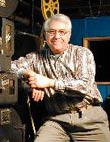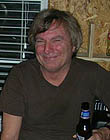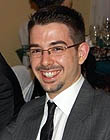|
|
This topic comprises 9 pages: 1 2 3 4 5 6 7 8 9
|
|
Author
|
Topic: Low cost homebrew red LED light source for cyan tracks
|
|
|
|
|
|
|
|
|
|
|
|
|
|
|
|
|
|
|
|
|
|
|
|
|
|
|
Steve Kraus
Film God

Posts: 4094
From: Chicago, IL, USA
Registered: May 2000
|
 posted 08-16-2003 10:48 AM
posted 08-16-2003 10:48 AM



Yes, conventional cells are subject to damage from errant splices but I believe Mark is referring to the huge improvement in separation and HF response with reverse scan.
But let us be careful here as we are mixing apples and oranges here when we start equating the change to red LED with the improvement that is brought about by reverse scan. Then you fall into the trap promoted by the dye track people who would like everyone to believe that dye tracks lead to better sound. Reverse scan leads to better sound.
I don't know the price of a JAXlight vs. a full reverse scan upgrade but I agree with Mark in general that, assuming a JAXlight is not inexpensive, one would be better off investing in reverse scan and get the big jump in quality.
BUT, conversely, if someone is content with the quality of conventional scan--let's say they run almost always in digital and analog is just a rare backup; or a home user, maybe even mono--well then a ten dollar conversion makes a lot of sense and you don't feel like you're wasting money that ought to have been spent towards reverse scan. If and when you do reverse scan later on you've only wasted ten bucks. Even Mark could probably sleep soundly with that.
Bruce: No, a reverse scan system does not have a slit lens per se. The image of the soundtrack is projected ON TO (and focused on) a mechanical slit with the pickup behind it. Because the image is being enlarged a slit of a given width is the optical equivalent of a much finer slit on a conventional slit lens system but without weird diffraction effects. You also don't have the weird crosstalk effects from light bouncing off the cell, off the back of the film and back to the cell. Separation--at least visually on a scope looking at X-Y--becomes virtually 100%.
| IP: Logged
|
|
|
|
|
|
All times are Central (GMT -6:00)
|
This topic comprises 9 pages: 1 2 3 4 5 6 7 8 9
|
Powered by Infopop Corporation
UBB.classicTM
6.3.1.2
The Film-Tech Forums are designed for various members related to the cinema industry to express their opinions, viewpoints and testimonials on various products, services and events based upon speculation, personal knowledge and factual information through use, therefore all views represented here allow no liability upon the publishers of this web site and the owners of said views assume no liability for any ill will resulting from these postings. The posts made here are for educational as well as entertainment purposes and as such anyone viewing this portion of the website must accept these views as statements of the author of that opinion
and agrees to release the authors from any and all liability.
|

 Home
Home
 Products
Products
 Store
Store
 Forum
Forum
 Warehouse
Warehouse
 Contact Us
Contact Us




 Printer-friendly view of this topic
Printer-friendly view of this topic













![[Wink]](wink.gif)






